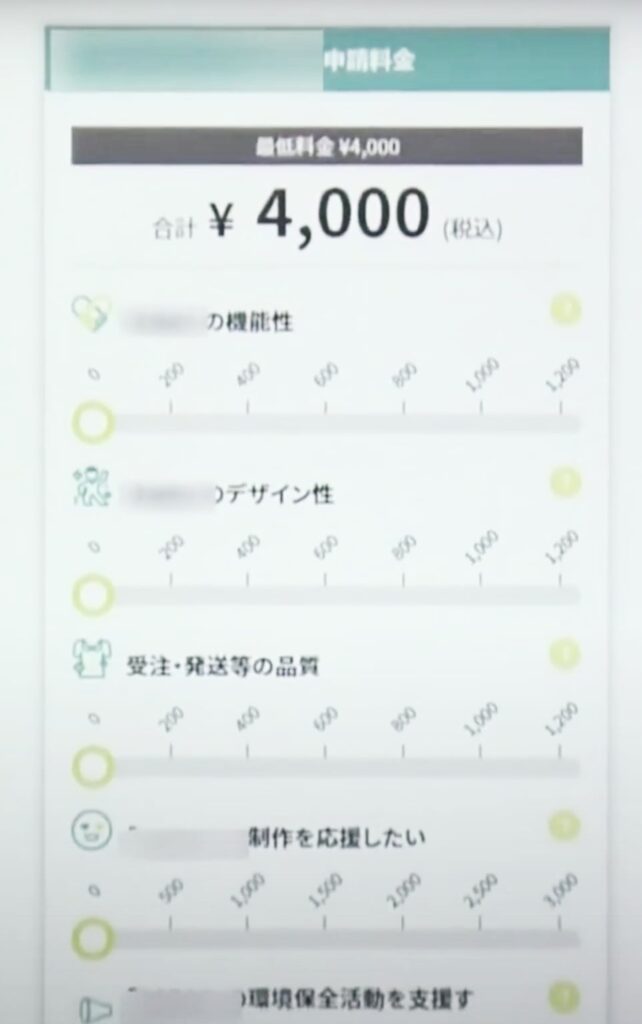Recently, we saw a short news clip about an online e-commerce platform that was offering “pay what you want” pricing.
In the past, we’ve used pay what you want for our online streaming tickets for the Material Conference. We looked at it as a way to generate a small bit of revenue we weren’t expecting anyway. Online streaming tickets don’t cannibalising any regular event ticket sales. Also, a streaming ticket could be sold globally, therefore setting a minimum price could be incredibly expensive in some regions of the world. If you could only afford $0, we were ok with that.
But this e-commerce platform is not meant for virtual goods, it is for physical products and services. That immediately peaked our interest at who would pay any amount above zero? It turns out that the teaser was a bit misleading. There is always a minimum amount, then based on a satisfaction survey, the price increases accordingly.
Seeing the demo was mind blowing. 🤯 It is such a simple concept, but there are massive benefits flowing both to the consumer and the provider.
In the example, the company was selling a handbag suitable doing a large grocery shop. They set the minimum price at $40. A casual buyer might not fully trust the product because they haven’t had the chance to hold it, feel it, use it, etc. This new e-commerce platform lets them order it, but wait about 2 weeks before they are required to pay. Everyone is aware of the minimum prices.
After the trial period is over, the consumer answers a short survey. In this example, it is only 5 questions. Each question is a seven point scale. As the choice of your answer increases, so does the price of the product.
The first category is Functionality. If you feel that the product, in this case the bag, was very functional, you’d increase the slider to maybe 6 out of 7. With each step, the price of the bag increases $2 for a new total of $50.

You repeat this for all the questions to get a new total. This is the new, final price you pay for the bag.
These are survey questions every consumer answers:
- Functionality
- Design
- Quality of service on ordering and delivery
- Support the production
- Support the Environmental Protection Initiatives
Questions 1, 2, and 3 are probably the standard questions, but 4 and 5 might bend depending on the product, service and company. Questions 4 and 5 feel more like a donation of support and not directly tied to the product itself.
We’re not sure, but we assume that if you just don’t answer the survey you will be billed either the maximum or average price – not the minimum
As a consumer, I pay based on the value that I am getting out of the product. It reduces my worry that buying things “sight-unseen” from a website which don’t fit my needs or are of the quality I expect. This works for services as well. The other example in the news brief was a cleaning service. People were not sure how well their house would be cleaned, so setting a minimum and then increase the price based on the quality attracted more people to try the service.
The survey also acts like a mirror. As people rate the quality, functionality and design of the product, a new average price emerges. This is shown to people paying as an anchor for their suggested price. For instance, if we see that the average rating for quality if 4 out of 7, we are more likely to bring our response closer to that.
All this survey data helps companies improve their products and services too. If everyone is ranking the design and functionality high, but the quality low, it gives actionable customer feedback. There are opportunities to change future products or services to key areas to improve the revenue.
This is value-based pricing for physical goods. For knowledge workers, we are so stuck in selling our time. We bill hourly or daily, when we should be selling ourselves relative to the value that we bring to the company. This isn’t easy, so we fall back to something everyone agrees on and that’s an hourly rate.
This e-commerce platform has managed to create a way to do value-based pricing on physical goods!
It also gives customers a way to pay you MORE than you expected. In a traditional e-commerce platform, you select your product and pay what they tell you it is worth. They could be missing out on potential revenue from people willing to pay a premium to make sure you exist or to say thank you. This ‘pay what you want’ pricing allows for this to happen.
In the news clip, they mentioned that they want to expand to live events. Could you imaging having a value-base price to go a concert of some lesser-known band. You know, the one your hip friend is talking about will be big one day. What if you only had to pay a portion of the ticket price, then after the show, if you really enjoyed it (and you’ll know if you did or not) the price increases accordingly.
There is defiantly something in this idea. How it is executed is key. Which is why we were fascinated by the survey questions.
Here is the clip from the news show. It is in English, but the e-commerce platform is in Japanese, so we got some translations.
After seeing this in action, our minds are racing with all the possibilities and project were we might be able to apply this.